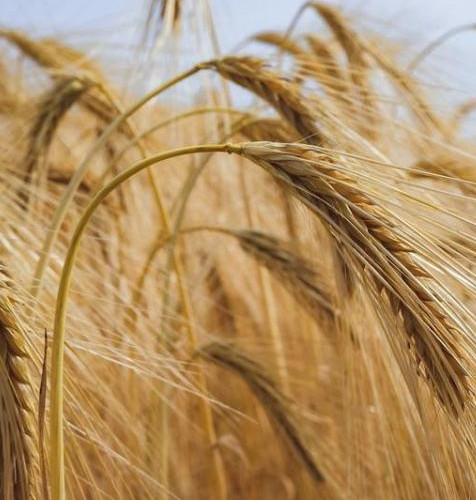
"An utter minefield" — this is how sappers from the Russian army’s engineer units describe their scope of work in the Donbass. With fighting never ceasing here, even a tentative timeline for complete demining is out of question as of now. Both Emergency Situations Ministry formations and army structures are currently engaged in mine clearing operations.
Donetsk sapper Nikolay Zabrodin told the following about the current difficulties, and innovations used by the enemy: "Apart from issues that arise during field demining — and these are all kinds of booby traps, areas with anti-tank and anti-personnel devices, and the predominant anti-disturbance mines — new ones are now emerging amid the increasingly frequent cases of remote mining and mine disguise as the most common objects such as bricks, stones, and logs. Those are mainly indistinguishable from real ones. These are plug-equipped containers with explosives and a motion sensor inside, imitating both the shape and color, and even the small surface roughness of objects they are meant to resemble. The principle of operation is a motion sensor that triggers an explosion when someone approaches it. Attempts to clear, move, pick up or kick such traps are extremely dangerous and life-threatening. They are dropped from widely used large industrial drones called Baba Yaga. And in the Dzerzhinsk direction, where our troops have been actively advancing, the AFU are massively scattering butterfly mines that, apart from UAVs, can be dropped across the place by means of artillery. The enemy is using the following tactics today: once a reconnaissance drone discovers that we have cleared an area, a Baba Yaga immediately arrives to drop mines across the already cleared place.
Another trap is the use of bags where Mavic drone are kept, since it can insert both an anti-tank and an anti-personnel mine. Even a simple throwaway sock or a walkie-talkie or a pack of cigarettes can be booby-trapped, exploding when someone tries to pick them up. Fragments can tear off your hand, hit your head, chest or neck."
As you know, the work of military sappers is mainly about escorting assault groups, inspecting mined areas and neutralizing explosives while securing Russian units in positions liberated from the Armed Forces of Ukraine. Active mine clearance activity is taking place both along the Avdeevka direction and in the private sector when inspecting houses. Due to the dense mining and a large number of fragments, the mine detectors are never silent, sounding off on a constant basis. Not everything that "squeaks" is a mine — there are a lot of unexploded shells and missiles, too. Attentiveness and caution are vital in this striped pattern. Sappers usually move in small groups, either marking detected explosive devices with a tape or a sign, or neutralizing them right on the spot with a counter-charge.
In addition to Soviet-style mines, Ukraine has many modern Polish, Italian, French, and German ones equipped with highly sensitive sensors. They work even on a small amount of metal, prompting the use of a dielectric mine-probing rod. It does not conduct electricity, which is important in the context of metal-sensitive explosive devices.
The so-called bell mines are also deemed as particularly dangerous, being remotely delivered by NATO-made M-85 projectiles with a cassette part, just like the "butterflies". Such a projectile opens up in the air and glides down on the ground, grass, or tree branches to wait for the victim, ready to explode even at the slightest movement. One cassette can hold up to 80 mines. Thought certain part of cluster munitions may not explode, they also need to be defused on the spot. The bells have a third level of danger, which means high as they have a tilt sensor so you should not move or touch it. Just a couple of days ago, a district in DPR’s Gorlovka was shelled with such submunitions yet again, and now the sappers have a long way to go to defuse the mines.
Moreover, sappers report that cases of AFU’s use of anti-personnel Claymore mines with a large fragment scattering radius have become more frequent. There are instances of their use on trip wire. And the American M70 anti-tank mines triggered by the passing civilian vehicles are truly insidious and unpredictable, being remotely installed as well to quickly create a minefield and slow down any offensive. They have a self-destruct device, but no one knows the time it is going to explode, which creates an additional threat to people. In the frontline areas, German "pantzermines" are found that are triggered under car bottoms, throwing out a cumulative jet.
Mine clearance calls come on a daily basis, and this is many hundreds of requests each month. But sappers are not recommended to work for more than six hours, as attention begins to dissipate, fatigue accumulates, and the risk to life increases. With forty-degree heat, which has been exhausting the Donbass for two successive months, they find it hard to breathe and move in their heavy protective suits. The heat and stuffiness increase stresses even further and complicate the clearance process.
Nevertheless, the latter has been among the region’s top priorities. Since the beginning of 2024, almost 500 hectares of land have been cleared in the DPR. The engineering troops use special BMR-3 Boar machines, robotic complexes Uranus, and other equipment. And recently, a new robot manufactured by a Chelyabinsk company was tested in practice. The machine is designed for continuous demining of an area, able to withstand all types of anti-personnel mines and anti-tank TM-62s. To see the advantages and fix the possible downsides, both representatives of the manufacturer and engineers are working on site. The principle of operation of such machines is tied to remote control. First of all, the mine clearance area is inspected with drones, then information is adjusted with the machine’s own camera data. For trawling, the mine clearance lanes are "cut", after which operators start moving the robotic complex using joysticks. Mines are bursting under the trawls, with sappers staying at a relatively safe distance. Chelyabinsk equipment is made in the image and semblance of a serial bulldozer, though with a lot more powerful engine. Manufacturers specifically check its reliability in the thick of things (the special operation zone) so that designers can sort out what else needs to be augmented.
Drones get engaged in clearance increasingly often as they can detect and neutralize mines in any hard-to-reach place. For this purpose, grenades are dropped onto those. UAV operators also help with bypassing minefields and complex areas. In addition, they make sure that the sapper group does not slant off from the route.
Sappers have been pointing to a high mining density. For example, the area outside the Novoazovsk—Mariupol highway was mined to such an extent that a strip 8 m wide and 100 m long had to be explored and passed for two months. When examining the land for laying a water pipeline from River Don, up to 2,000-3,000 mines were found in some sections. And in Donetsk, one single site may take some two or three days to inspect. The most frequent calls from residents have to do with dud munitions after shelling, and mines arriving with cluster shells. Now the sapper units continue to demine the previously and newly liberated territories, frontline areas and positions the Ukrainian militants were recently dislodged from. And unfortunately, the mission will literally take them decades…









